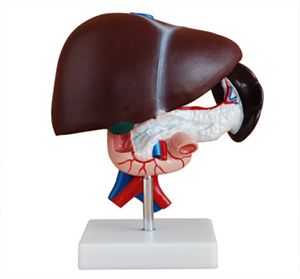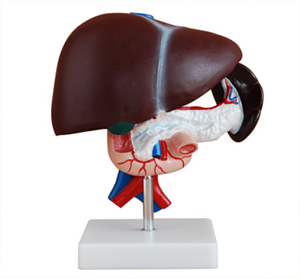
Hepatopancreatic duodenal Model: A bridge from Theory to practice?
Article tag: Hepatopancreatic duodenal Model Organ management model

In the vast field of medicine, theoretical knowledge and practical operation are the two pillars that complement each other. Between the two, teaching models play a crucial role, they are like a bridge, connecting abstract theory and concrete practice. The model of liver, pancreas and duodenum is just such an indispensable bridge.
...
In the vast field of medicine, theoretical knowledge and practical operation are the two pillars that complement each other. Between the two, teaching models play a crucial role, they are like a bridge, connecting abstract theory and concrete practice. The model of liver, pancreas and duodenum is just such an indispensable bridge.
First, from a theoretical perspective, it provides us with an intuitive and three-dimensional perspective to examine and understand this complex area of the human body. The model accurately reproduces the anatomy of the liver, pancreas, and duodenum, as well as their connections and adjacent organs. By observing and touching the models, students can gain a deeper understanding of the form, function and relationships between these organs, thereby consolidating and deepening their theoretical knowledge.

However, the accumulation of theoretical knowledge is only one part of medical study. More importantly, how to transform theoretical knowledge into practical operation ability. The hepatopancreatic duodenal model plays a crucial role here. It can not only be used as a teaching aid in anatomy courses, but also help students understand the anatomical structure and adjacency of organs. It can also be used in the teaching of surgery, internal medicine and other related disciplines to help students conduct surgical simulation and skill training. Through the practical operation of the model, students can feel the operation process more intuitively, master the operation skills, and improve the practical operation ability.
In addition, it provides a platform for students to transition from theory to practice. Simulating the operation on the model allows students to familiarize themselves with the surgical procedures and procedures without harming the patient. This simulation practice not only improved the students' confidence and resilience, but also laid a solid foundation for them to encounter similar situations in clinical practice in the future.
In summary, hepatopancreatic duodenal model, as a bridge from theory to practice, plays an irreplaceable role in medical education. It helps students to transform abstract theoretical knowledge into concrete practical operation ability, and improves their professional quality and comprehensive ability. At the same time, the model also provides students with a safe and effective practice platform, so that they can accumulate experience in practice and get ready for future clinical practice.

Marketing Center
Hong Kong, ChinaProduction Base
Shanghai, ChinaProducts
Contact Us
 Address: Hong Kong, China
Address: Hong Kong, China
 Phone:+86 19937901373
Phone:+86 19937901373
 Email:sophia@adahealthy.com
Email:sophia@adahealthy.com
 Mobile:+86-0379-65160607
Mobile:+86-0379-65160607








